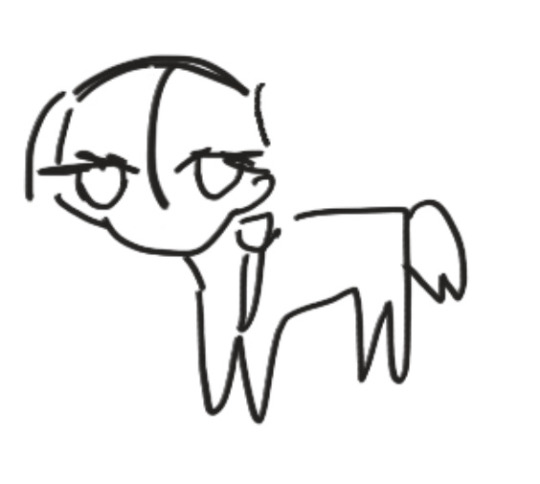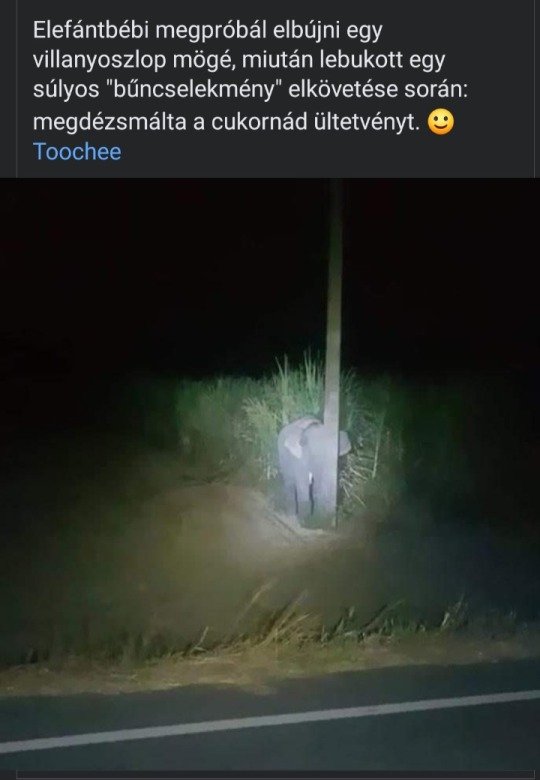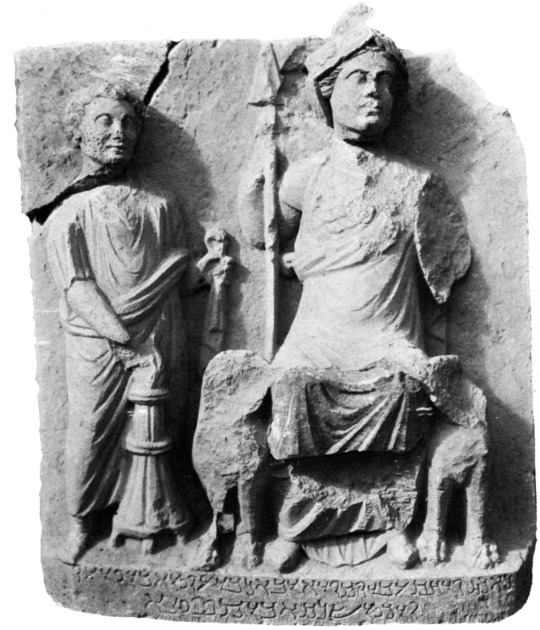#AlLat
Explore tagged Tumblr posts
Text

Old from June
#ninjago#art#lego ninjago#fanart#harumi jade#cleaned this up super messily so I could post it. don’t look too close at the colored lines lol#the eyes look off but I don’t have time to fix allat#ninjago harumi#harumi ninjago#the swords also look bad but again. I don’t got time. for allay#allat
132 notes
·
View notes
Text
since the vod will expire soon: here's bits from the stream 👍🏿
#I have the full thing downloaded but reuploading a three hour video is like a lot#EACreatorNetwork#EAPartner#allat
94 notes
·
View notes
Text
when i get back into the digital art groove i want to concept swap Sleep Token and Powerwolf. more preacher-like vessels with appropriate facepaint and a cryptic masked werewolf collective (now 50% more furry)
#sleep token#powerwolf#bygone talks#listen wake up the wicked has been worming its way into my brain and you know#allat
50 notes
·
View notes
Text
And if I don't get an illustration of Kuras begging, and I mean GROVELING to Mc because Mc is going to walk into an obvious trap set up by his opps I will riot.
#touchstarved#touchstarved game#touchstarved kuras#i need that angel on his knees PLEADING with Mc to understand reason#i mean TEARS#gripping the fabric of Mcs cloak#allat#and hes not even doing it for Mc hes just on his knees cus he really dont want to add onto his already long laundry list of guilts#about not being able to save someone from themselves ykwis?
90 notes
·
View notes
Text
The best thing someone could do is be into me
The second best thing a person can do is be bi to any degree
13 notes
·
View notes
Text
🦁🧿🌙 Pre Islamic Goddesses 🌙🕋☀️
Al-Lāt, syrian and arabian goddess of destiny and the city Mecca, Lady of the temple, her Name means „Goddess“ and is the female version of „Allah“, represented by the lion, married to Bel, prototype for the greek goddess of wisdom, Athena, her followers took her figures with them in battles, one of the three goddesses of Mecca, the kaaba 🕋 was build for them, her shrine was a red stone cube
Al-Uzza, syrian and arabian goddess of destiny and the venus, one of the three goddesses of Mecca, the youngest of the them, she got worshipped at the kaaba 🕋 and was the greatest idol of the Qurayash who controlled Mecca, they used to journey to her, offer gifts and sacrifices, her shrine was a white stone cube
Anat, syrian and egyptian goddess of war and protector of wild animals, goddess of love and eternal virgin, mother of all, life and death
Ašera, syrian-canaanite sea goddess
Astarte, semitic goddess of love and fertility
Aštoreth, ugarit goddes, bride of the tyrrhenian sea,
Athirat, ugarit sea and sky goddess, lady of the sea, producer of gods, lady of gods
Ereškigal, sumerian goddess of the underworld and Inannas older sister, she can kill with her eyes, snake goddess, she is naked, with eyes out of stone and black hair, sometimes she wears a lions head and her palace is out of lapislazuli
Han-Ilat, northern arabian big goddess
Inanna, sumerian goddess of war, sex, love and the venus, lady of the sky, lady of all houses, city godess of Uruk, female leader goddess, her symbols are the moon and the star
Išhara, syrian underworld goddess
Ištar, babylonian and mesopotamian goddess of war, sex and the venus, most important diety in the ancient world of middle east, many goddesses are versions of her symbols are lions and the star
Ištar of Arbela, assyrian goddess of war
Kiriša, elamic mother goddess with an aspect of war, Lady of the sky, benefactor of the kings, mother of gods
Kulitta, servant of Ištar/Šauška
Lamaštu, babylonian sky goddess, demon with lion head who eats children and makes people sick, kills innocent people, always around rotten and filthy stuff like feces and dead animals,
Lilithu, sumerian goddess of mischief, misery, the night and the storm who lives in ruins, seduced men and stole children
Manat, arabian goddess of the moon, the venus, destiny, and one of the three big goddesses of Mecca. Her shrine was a black stone cube, pilgrims used to cut their hair at her shrine to conplete their journey to the kaaba 🕋
Nammu, sumerian creator goddess of the primordial sea, created together with her son Enki the first men out of clay
Nanše, sumerian goddess of water sources, and brooks, divination, dream interpretation and the holy order, most important goddess in Lagaš, Mother of her daughters Ninmah and Nunmar
Ninatta, servant of Ištar/Šauška
Ningal, mesopotamian goddess, wige of the moon god Nanna, great queen, high lady, lady, star of the prince, sevenfold light, treasured, goddes of the city Ur, goddess of epiphany, mother of Inanna and the sun god Ut
Ninmah, sumerian goddess of midwivery
Ninsianna, babylonian goddess, rust red lady of the sky, pure and sublime judge, sometimes war goddes with a scimitar and a lion headed club, she is the goddess of venus and she wears a star on hear horned crown
Ninšubur, sumerian goddess and holy servant of Inanna, Lady of the servants, been very popular because she was seen as a messenger between men and gods, seen as personal goddess by some kings, guardian who fights with the weapons of air and the sky
Nisaba, sumerian goddess of corn, goddes of writing texts, science and architecture, sister of Nanše and Ningirsu
Pinikir, elamian, later mesopotamian, hurrian and hittian mother goddess
Šauška, hurrian goddess of love, war, incantations and healing
Tiamat, babylonian goddess of the sea, embodiment of salt water, married to Abzu the embodiment of fresh water
Tunit, punish goddess of fertility and guardian of cartago, virgin mother of Baal, who gives him every year new life, her attributes are pomehrenates, figs, ears of corn and the dove
#al-lat#allat#aluzza#uzza#anat#ašera#ashera#astarte#aštoreth#ereshkigal#ereškigal#Han-Ilat#Hanilat#Inanna#Išhara#ištar#ishtar#kiriša#lamaštu#lilithu#al-manat#manat#nammu#Nanše#Ninatta#Ningal#Ninmah#Ninsianna#Ninšubur#Tiamat
12 notes
·
View notes
Text
PRAYER TO THE ARAB GODESSES : ALLAT , AL-UZZA AND MANAT.

Image source:
https://www.thaliatook.com/AMGG/arabtriple.php
Mighty goddesses, you who have protected us from all harm through the centuries, please hear my prayers. Aid me in my hardest times, and look over me when i need you. I humbly ask you, great Al-Uzza , Al-Lat and Manāt , to protect me when i need it, and be there for me. May my life be as clean as a desert with yellow sand. May my future be as bright as the Sun protected by the goddess Shams. May my life be as abundant as Allat's grain fields. May my love be as gentle as Al-Uzza. And may the time of my death be as far away as time. Thank you, for everything.
Glory to you, great goddesses.
#paganism#pagan#deity work#spirituality#mythology#witchblr#witches of tumblr#pagans of tumblr#pagan stuff#arab paganism#arabian paganism#arab mythology#arab#al uzza#allat#manat#triple goddess
13 notes
·
View notes
Note
mon petit poney mon petit poney
AaahhhhhAaaaahhhhhh
Mon petit poney
je me demandais ce qu'était l'amitié
et avec moi vous l'avez tous partagé!
de grandes aventures
pleines de joies
un immense coeur pure
Et fort a la fois
un brin de tendresse
c'est oas bien complexe
UN TOUR DE MAGIE ET C'EST PARTI
Tu es my little pony
l'amitié est la magie qui nous uniiiiiiiiiiit
I’m not 100% but this MIGHT be the first time someone has sent pink pony club into my ask box and i’ve never been more thrilled


9 notes
·
View notes
Text
sometimes i remember how prison break the tv show started one of the most complex, nausea-inducing fictional portrayals of repeated cycles of abuse in 2005, completely by accident
#this show spends most of its runtime being corny and cringey but then it gets to#allat#and then back to being corny and cringey#unbelievable#prison break#tv shows
15 notes
·
View notes
Text
Goddess Al'lat
Arabian Goddess
Often a chief goddess in various ancient Arabian locations.

*I could not get her Safaitic name inscription for the table
—How to use the Internet Archive Link
🔵 Information
From Chapter 4 The Goddess of Pre-Islamic Arabia by Zofia A Brzozowska in Byzantium and the Arabs. The Encounter of civilizations (Academia Link):
“Some scholars are of the opinion that the three goddesses: Al’lāt, Al’Uzzā, and Manāt whose cult reached back to ancient times, occupied a particularly prominent place in the pre-Muslim pantheon.” Page 55.
“The name of the first of these goddesses appears already in the works by Herodotus, written in the fifth century BC. In describing religious beliefs of the Persians, the father of history points to the Assyrians and the Arabs as those from who the Persians adopted the cult of Aphrodite Urania. enumerating various names given to the goddess by different ethnic groups, the Greek historian says that the Arabs called her Alilat.” Page 55
“According to many scholars Arab religious cults described by Herodotus and his continuators were particularly popular with the Arab tribes inhabiting Nabatea— the State that existed from the fourth century BC to the first century CE. Archaeological excavations in this area prove that Al’lāt and Al’Uzzā— along with the God Dūshara, topped the Nabatean pantheon.” Page 56
“The cult of the goddess did not ceased to exist when Nabatea fell under Roman rule in 106 [CE], but by assimilating elements typical to the ancient religion it acquired a new dimension. Al’lāt began to be equated with Athena as is evidenced by the basalt stele representing the Goddess […] dated to the second century CE the stele shows the goddess standing with A spear in the right hand and a small shield in the left. Attired in Greek robes the goddess is wearing a helmet and breast plate.” Page 58
“To the discussion of the main goddess of Nabatea one should add a few remarks on the religious system that existed in Palmyra. archaeological excavation’s conducted by Polish scholars Leads to the conclusion that Al’lāt was one of the most important deities in the Palmyran pantheon. her name appears in a great number of inscriptions discovered in the city. A temple dedicated to this goddess was erected in the first century BC. it was rebuilt several times adjusting its architectural design to the change in the development of the urban area. Michal Gawlikowski is of the opinion that the temple survived Roman interventions which took place in the third century CE and it was not until the fourth century CE that it finally fell into ruin.” Page 62-63
From The Palmyrenes of Dura-Europos: A Study of Religious Interaction in Roman Syria By Lucinda Dirven page 78-79 (Internet Archive Link):
“The nomadic origin of members of the Bene Ma’zin [tribe] is apparent from the predominantly Arab character of the deities venerated in both sanctuaries the goddess Allat is the deity most frequently attested in Safaitic inscriptions throughout Arabia until the advent of Islam. Her name derives from Arabic al-‘ilâhat meaning ‘the goddess’ a clear indication of her importance. The goddess is first mentioned by Herodotus in the fifth century BCE. according to the Greek historian the desert people of the Sinai worshipped two deities: Orotalt (i.e Arabic Rada, Palmyrene Arsu) and Alillat, by whom they took oaths”
🔵 Inscriptions to Al'lat
From The Religion and Rituals of the Nomads of Pre-Islamic Arabia: A Reconstruction Based on the Safaitic Inscriptions by Ahmad Al-Jallad Chapter 3 (Academia Link)
*apologies for no alt text in some of these, the notation causes gibberish when I use the copy/paste technology



Page 94:

🔵 Iconography
Relief from Temple of Ba'alshmanin, Palmyra. 1st cent A.D. Goddess Allat with Palm + Lion. Mains Mus, Germany. XII.5.20 (Link)

Lion of Al'lat

From Lions of Al'lat by Michal Gawlikowski (Link 1) (Link 2)
The sculpture represents a huge lion in frontal view and was certainly incorporated into the wall of the sanctuary. There are no clues as to its exact location, but it would be sensible to suppose that the animal served as a guardian of the gate. As all recovered fragments fit into the restored monument, there is no reason to believe that a symmetrical beast accompanied this one at the other side of the entrance.
The figure of the lion is 3,46 m high from tip to toe and 1,94 m wide at the head. The half-opened mouth shows menacing fangs. The luxuri ous mane covers entirely the breast, leaving only the front legs apparent. Between these, an antelope is crouching, putting confidently one front leg on the predator’s claws. The sculptor rendered precisely the features of oryx leucoryx (Pallas 1777), a large animal of white complexion and long straight horns, once frequent in Syrian and Arabian deserts. Extinct in Syria for a while, the species has been lately reintroduced in the Talil reserve not far from Palmyra, where a herd of some thirty animals roam now a fenced stretch of the desert. Though maybe deriving from a hunting motive, the composition clearly intends to convey the impression of an idyllic friendship between the predator and its usual prey. The oryx is being protected between the formidable paws and shows no signs of alarm, while the lion seems to deter the beholder from harming its charge. This impression is confirmed by a short text inscribed on the left paw of the lion. It runs: “May Allat bless whoever does not spill blood on the temenos.” […] In front of the primitive chapel there stood an altar, preserved in the same place inside the later cella. Only the lower part of it subsists today, but the fact that it remained in the 2nd-century temple is proof enough that no animal sacrifice was performed on it. The altar, when complete, had to be rather high and would be intended just for frankincense offering, as most Palmyrene altars were.

The statue was put on display in 2005 in Palmyra Syria, destroyed in 2015 by Daesh, but moved to Damascus and restored again in 2017:

Amulet with Al'lat (Link)

🔵 More Reading
Representing and Naming the Gods. Iconography and Nomenclature of the Goddess Allat in Palmyra and Hatra by Lucinda Dirven | Discussion of Al'lat’s cult images and identifications with Greek deities LINK
ALLĀT AND THE DESERT “KULTLANDSCHAFT” OF ALLĀT IN THE EAST by Aleksandra Kubiak-Schneider | “…offers a study not through the “Arabic”, ethnic, approach, but through the topography of the sacred places dedicated to the goddess. The paper focuses on the emplacement of the temples of Allāt” LINK
#polytheism#paganism#landof2rivers#arabian#arabian polytheism#al'lat#allat#goddess#god#deity resource#queue
6 notes
·
View notes
Text
i needed to make a feeeww oc memes im sorry (pjo ocs)



there will probably be more in the near future
#i think this is hilarious (its not)#hector campbell#harris conway#roman conway#chuck arberin#kasey#jessica laurens#jessica and hector are a DYNAMIC DUO#the chuck slander is so real#everyone who follows my account may or may not be hearing about my ocs at some point#i will post about them!!#incorrect quotes and gifs#allat#i apologize for the person i am about to become /j#pjo ocs#pjo oc#there are DOZENS more ocs waiting to be acknowledged in my posts#hector's my favorite so he gets most posts about him
4 notes
·
View notes
Text
Nah cause we really don’t talk about Tristamp Knives i realize Orange went too far low-key😭
#AHHHHH#Like I just realized#they dun slandered him a little bit#like I just got some max context#that’s crazy#b0tstalks#millions knives#like I literally just forget#allat#willingly
9 notes
·
View notes
Text

Legaranyosabb sztori amit valaha láttam ❤️🥰
#elephant#elefánt#baby#little elephant#magyar tumblisok#magyar#magyar tumblr#magyar lany#sztori#imádom#allat#allatok
6 notes
·
View notes
Text
omg ok, i have sooo many WIPs rn BUT rich boy gojo got pushed up to high priority bc i needs that.
#★ — general#ALLAT#i been thinking about him all vacation wtf#him buying me everything I want#flaunting me around#fucking me on a california king bed#ugh
2 notes
·
View notes
Text

Allat dressed as Athena Khirbet Esh-Shana, Syria c. 250 CE? Source: The Pantheon of Palmyra by Javier Teixidor, 1979
transcription: 1) lalt wrhm obd wmwda rbal br owyda br ydaw 2) wdkyr slma brqsyna
translation: 1) To Allat and Rahim. Rabbel son of Awida son of Iadau has erected in thanksgiving. 2)And remembered be Shalma son of Cassianus
#allat#athena#asherah#ashirat#canaan#canaanite gods#phoenicia#phoenician gods#aram#aramean gods#syria#syrian gods#levantine gods#mesopotamia#mesopotamian gods#pagan gods#polytheism#archeology#magic#witchcraft#occult
2 notes
·
View notes
Text

The three goddesses of Mecca
#hexe#magick#witch community#witchcraft#baby witch#witch tips#beginner witch#pagan witch#witchblr#chaos magick#manat#aluzza#uzza#al uzza#allat#al lat
7 notes
·
View notes